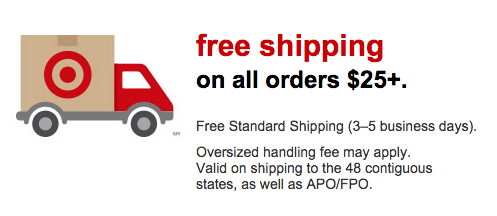The oldest marketing trick in the book consists of one word on one page – the word ‘free’ (it probably got you to read this far too). When consumers see the word, their eyes light up and their wallets breathe a sigh of relief, but it’s usually accompanied by a thought in the back of their mind saying it’s too good to be true. Sometimes, many ecommerce retailers have that very same thought when they consider offering free shipping.
Free shipping ‘s definition doesn’t really need an explanation – the words speak for themselves. But putting it to practice is useful due to its power to keep a customer from fleeing after seeing additional charges brought by shipping costs. It’s been reported that over 50% of abandoned shopping carts occur because of unexpected costs, so absorbing them works wonders on getting customers to punch those credit card digits in. They say don’t judge a book by its cover, but if you cover shipping costs for your customer, they will likely judge you pretty positively. Here’s how you can go about implementing it:
Marginmatics
Dust those old math books off; it’s time to revisit the most difficult parts of a second grader’s curriculum – basic addition, subtraction, and multiplication. Before making use of free shipping, it’s critical that your margins are in the green, and that means looking at the math. You’re probably already an expert, since you’re running a business after all, but all you need to do is check out the cost of supplying the product, subtract it from the product’s price point, and ensure that the cost of shipping that you’ll be taking on does not exceed the difference. Be sure to always, always check your margins.
A good head on your threshold-ers
But merchants are definitely smart enough to know there’s no reason to provide free shipping if the margins are so small that you hardly make anything. That’s where thresholds come in. Thresholds are the point where an order’s value guarantees free shipping for a customer. Like how you would calculate your margins, you also should find the appropriate order value that offsets the costs of providing free shipping. For instance, set a threshold of $25 before you handle all the shipping costs, and make sure the money you make off that order covers shipping costs and then some for that scrumptious profit.
That said, it’s critical that you use a threshold that your customers are comfortable with. When the threshold is too high, free shipping isn’t as effective since nobody will reach that order value. Target’s obviously large enough of a business to lower their threshold for free shipping, but small businesses can consider A/B testing their sites with different threshold amounts to see which one customers prefer most. Or, you can do multiple campaigns. Set up a threshold for a certain period of time, adjust it for a separate period, and check the results for which value seduced the most customers.
Tell that unwanted inventory to book it
If you’ve got poor selling products stacked on one another and collecting dust in inventory, free shipping might be an incentive to get them out the door. Imagine you’re a store specialized in selling bookmarks – one of the hottest niche markets around – and have a surplus of markers with fluffy tassles at their ends because they’re completely out of style these days. Make sure the margins work for you, create a banner or pop up on your site that explicitly says “free shipping on all tassled bookmarks,” and watch them fly off the library shelves.
Bundling products together while promoting free shipping is an option as well. Along the same lines, if you have a dud of a product, group it into a bundle that includes a few more popular ones to increase the chances of it finally leaving the warehouse. Promote a bookmark variety pack that just so happens to include a fluffy tassle one to gradually get rid of them. Again, make sure the margins meet your expectations, and consider product kitting to slim down any additional shipping costs from fulfilling multiple products.
Check the books
If you’re not a fan of dealing with more margins and would rather simply pass off the shipping costs, there’s an easy answer that prevents customers from panicking at the checkout: lower your shipping costs. Consumers that constantly flip out and smack the X button at the top right of the screen are likely reacting to the added costs, so look at your numbers and see what’s causing those large shipping costs.
Are your orders packaged efficiently? Are you selecting a shipping provider with affordable rates that are determined by what’s best for your packaging (by weight, or length / width)? You can also consider using an order management system that gives discounted rates through integrations with carriers. For more information on ways to reduce your shipping costs, check this article by Entrepreneur.
For additional material, also take a look at Kissmetric’s guide on how to make free shipping work for you. They may not have written the book on shipping, but the article is definitely a page from it that you should check out.




